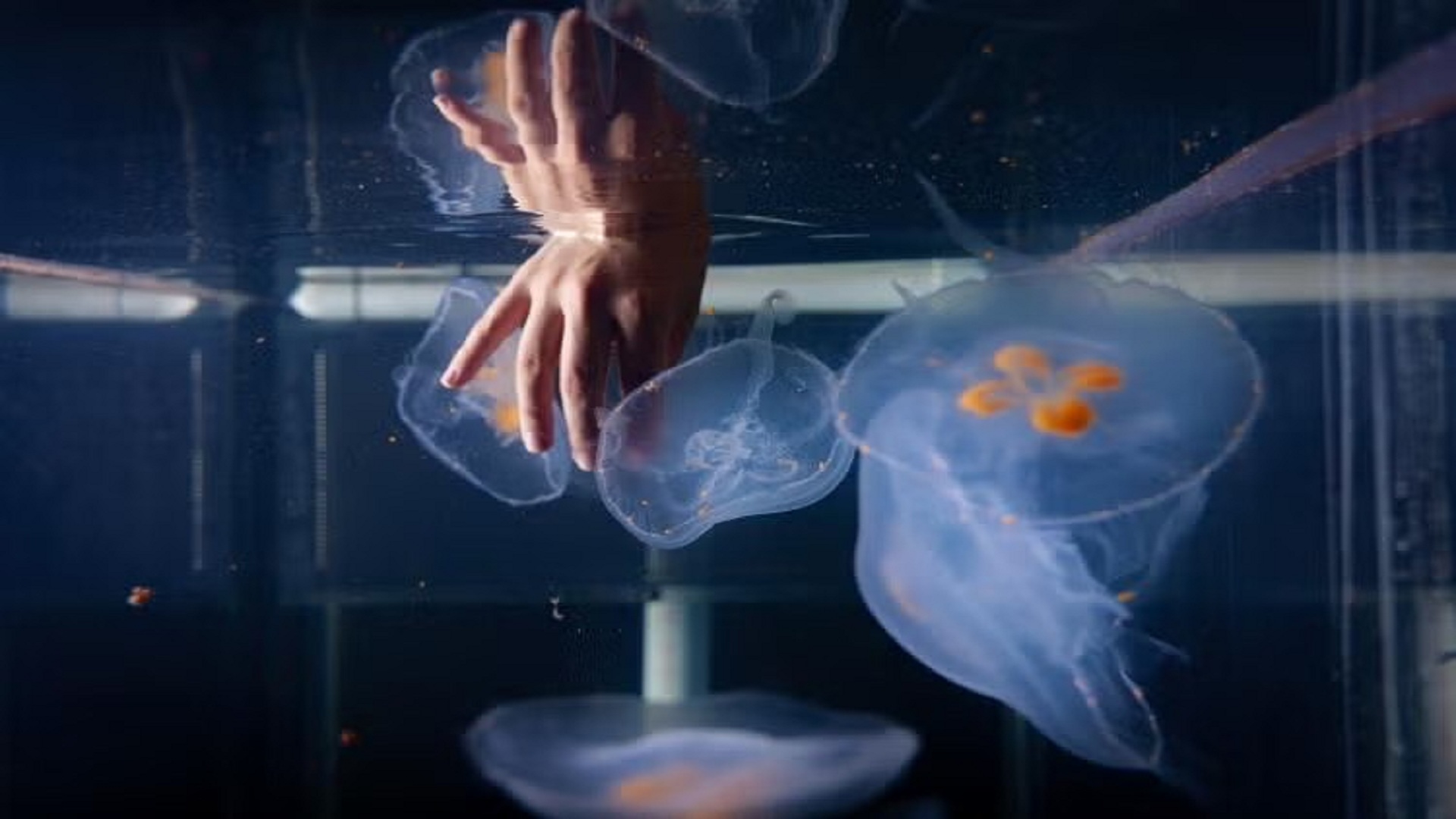Moon jellyfish could become humanity’s eyes in the ocean’s most inaccessible depths.
Engineers at the University of Colorado, Boulder, have developed a way to harness their efficiency, which could make certain aquatic research much easier.
She fits the jellies with microelectronic devices that activate key swimming muscles, enabling researchers to steer them toward remote ocean areas. Eventually, sensors will gather critical data on temperature, pH, and other environmental characteristics.
Going where humans can’t
“Think of our device like a pacemaker on the heart,” Xu said. “We’re stimulating the swim muscle by causing contractions and turning the animals toward a certain direction.”
As climate change accelerates, ocean waters are becoming warmer and more acidic, threatening marine life worldwide. Understanding these changes is essential, but some regions are prohibitively expensive or difficult to study using conventional equipment.
The cyborg jellies offer a potential solution.
Moon jellyfish are among the most energy-efficient animals on the planet. They are prehistoric, with a simple body structure that has remained unchanged for more than 500 million years.
As invertebrates, they lack a brain or spinal cord but possess basic organs and overlapping nerve nets. Crucially, they do not have nociceptors, or receptors that detect potentially harmful stimuli.
The jellies range from a centimeter to more than a foot in diameter. Their short, fine tentacles help capture prey such as zooplankton and small crustaceans. Xu notes that the jellyfish’s sting cells cannot penetrate human skin.
Though often found near coastlines, moon jellyfish inhabit diverse ocean habitats and can swim to extreme depths, including the Mariana Trench, roughly 36,000 feet below the Pacific Ocean’s surface.
Xu co-created the biohybrid robotic jellyfish concept about five years ago and first tested them in 2020 off Woods Hole, Massachusetts. She hopes the research will also inspire energy-efficient underwater vehicles.
“There’s really something special about the way moon jellies swim. We want to unlock that to create more energy-efficient, next-generation underwater vehicles,” she said.
Striving for ethical research
Xu and her team study precisely how moon jellies move with such ease. A recent study involved adding biodegradable particles to a tank and using lasers to visualize water flow created by the jellies’ swimming.
In the past, synthetic tracers like silver-coated beads were used, but biodegradable alternatives, such as corn starch, are more sustainable and less toxic.
The researchers are also working to make the jellies easier to steer in the wild. Xu plans to design additional nature-inspired tools for ocean study.
“There’s more to learn about the ethics of studying invertebrates,” Xu said. While once thought incapable of feeling pain, some invertebrates react to aversive stimuli. Xu strives to minimize harm, noting that stressed moon jellies may secrete extra mucus or stop reproducing.
“So far, the jellyfish are doing well. They’re thriving,” she said, pointing to tiny polyps forming inside the tanks.
Through this work, Xu hopes cyborg jellyfish can safely expand our reach into oceans, offering a glimpse into regions humans rarely see while ensuring the animals remain unharmed.
